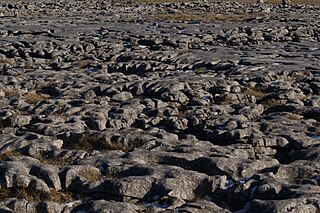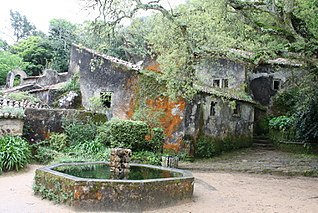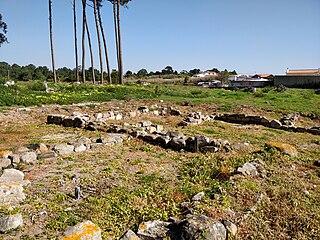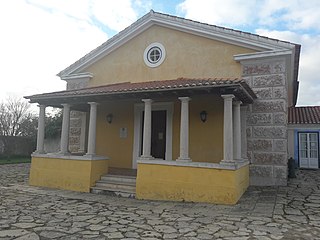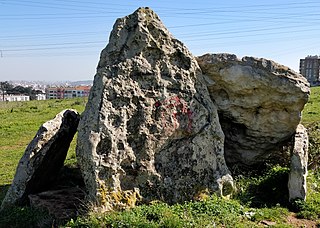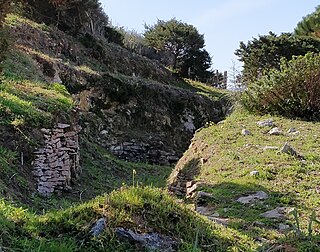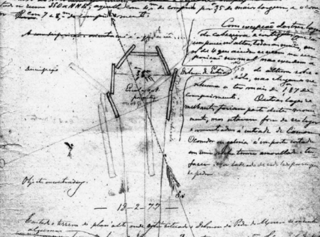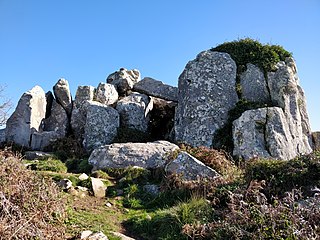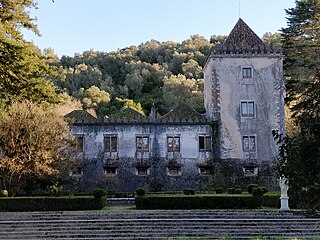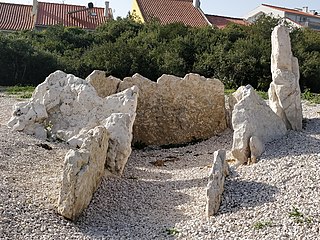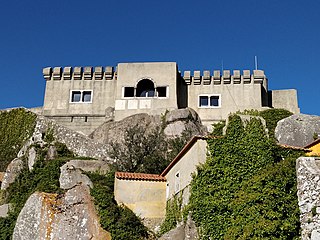20 Sights in Sintra, Portugal (with Map and Images)
Legend
Premium Sights
Book tickets, guided tours and activities in Sintra.
Guided Free Walking Tours
Book free guided walking tours in Sintra.
Welcome to your journey through the most beautiful sights in Sintra, Portugal! Whether you want to discover the city's historical treasures or experience its modern highlights, you'll find everything your heart desires here. Be inspired by our selection and plan your unforgettable adventure in Sintra. Dive into the diversity of this fascinating city and discover everything it has to offer.
Activities in Sintra1. Pena National Palace
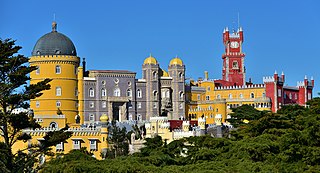
The Pena Palace is a Romanticist castle in São Pedro de Penaferrim, in the municipality of Sintra, on the Portuguese Riviera. The castle stands on the top of a hill in the Sintra Mountains above the town of Sintra, and on a clear day it can be easily seen from Lisbon and much of its metropolitan area. It is a national monument and constitutes one of the major expressions of 19th-century Romanticism in the world. The palace is a UNESCO World Heritage Site and one of the Seven Wonders of Portugal. It is also used for state occasions by the President of the Portuguese Republic and other government officials.
Wikipedia: Pena Palace (EN), Website, Heritage Website Sipa, Heritage Website
2. Campo de Lapiás da Granja dos Serrões
A limestone pavement is a natural karst landform consisting of a flat, incised surface of exposed limestone that resembles an artificial pavement. The term is mainly used in the UK and Ireland, where many of these landforms have developed distinctive surface patterning resembling paving blocks. Similar landforms in other parts of the world are known as alvars.
3. Águas Livres Aqueduct
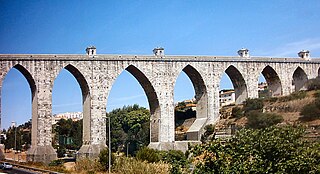
The Águas Livres Aqueduct is a historic aqueduct in the city of Lisbon, Portugal. It is one of the most remarkable examples of 18th-century Portuguese engineering. The main course of the aqueduct covers 18 km, but the whole network of canals reaches nearly 58 km.
4. Convento dos Capuchos
The Convent of the Friars Minor Capuchin, popularly known as the Convent of the Capuchos, but officially the Convento da Santa Cruz da Serra de Sintra, is a historical convent consisting of small quarters and public spaces located in the civil parish of São Pedro de Penaferrim, in Sintra Municipality, Portugal. Its creation was associated with the Portuguese Viceroy of India, D. João de Castro, and his family, but became a pious community of reclusive clergy that continued to occupy cramped humble spaces in the complex until the religious orders were abolished in Portugal.
Wikipedia: Convent of the Capuchos (Sintra) (EN), Heritage Website Sipa, Heritage Website
5. Sítio Arqueológico do Alto da Vigia
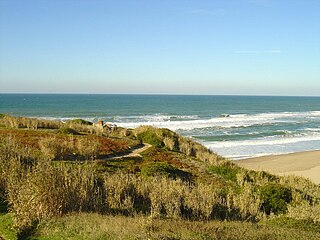
The Archaeological Site of Alto da Vigia is an archaeological site associated with Roman interventions in the Portugal, situated along the Praia das Maçãs in the civil parish of Colares, in municipality of Sintra.
Wikipedia: Archaeological Site of Alto da Vigia (EN), Website, Heritage Website Arqueologia, Heritage Website Sipa, Heritage Website
6. Villa romana de Santo André de Almoçageme
The Roman ruins of Santo Andre de Almoçageme is a Portuguese archaeological site located in the rural civil parish of Colares, in the municipality of Sintra. It includes a group of structures with typological, stylistic or historic value, whose structural elements are worthy of preservation.
Wikipedia: Roman villa of Santo André de Almoçageme (EN), Heritage Website Arqueologia, Heritage Website Sipa, Heritage Website
7. Fojo da Adraga
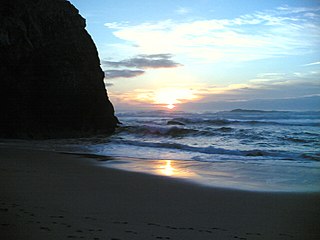
Praia da Adraga is a North Atlantic beach in Portugal, near to the town of Almoçageme, Sintra. It has been recommended in British newspapers. It is a "Blue Flag beach" with access for handicapped persons, It has an excellent restaurant and a very good emergency service system, although it is hard to reach by public transportation.
8. Cabo da Roca Lighthouse
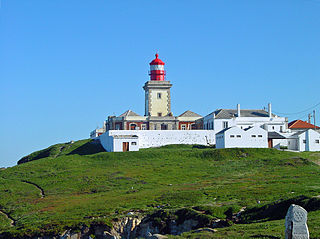
The Cabo da Roca Lighthouse is a beacon/lighthouse located 165 metres (541 ft) above the Atlantic Ocean, on Portugal's most westerly extent. It is located in the civil parish of Colares, in the municipality of Sintra, situated on a promontory made up of granite boulders and interspersed limestone. It is a third-order lighthouse, which originally began operating in 1772. It was the first new purpose-built lighthouse to be constructed in the country; the older lighthouses in existence at that time were constructed on existing platforms or from pre-existing beacons.
9. Museu Arqueológico de São Miguel de Odrinhas
The Ruins of São Miguel de Odrinhas, also known as the Museum of São Miguel de Odrinhas, correspond to a Roman villa from the 1st century BC. C. and other ancient remains located in Odrinhas, in the parish of São João das Lampas e Terrugem, in the municipality of Sintra, district of Lisbon, in Portugal.
10. Ponte romana da Catribana
The Roman Bridge of Catribana is located near the village of Catribana in the parish of São João das Lampas, in the municipality of Sintra in the Lisbon District of Portugal. Not being identified as a Roman bridge until the 1980s, and having suffered considerable degradation, it was restored in 2019.
11. Igreja de Santa Maria
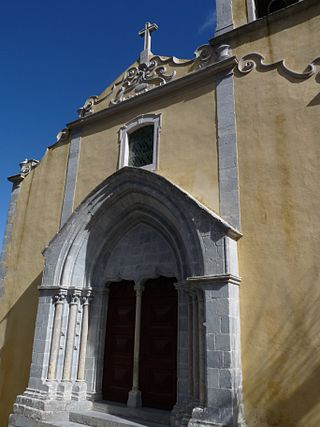
Igreja de Santa Maria is a church in Sintra, Portugal. It has been classified as a National Monument since 1922 and is part of the Cultural Landscape of Sintra, a World Heritage Site since 1995. The church, with three naves, represents the transition between Romanesque and Gothic of the mid-12th century.
Wikipedia: Igreja de Santa Maria (Sintra) (EN), Heritage Website Sipa, Heritage Website
12. Anta do Monte Abraão
The Anta do Monte Abraão was a megalithic dolmen located in the parish of Monte Abraão, in Queluz, Sintra Municipality, Lisbon District, Portugal. The dolmen was first identified in 1876, by Carlos Ribeiro, who carried out excavations until 1878 and published his results in 1880. Excavations suggest that it served as a tomb for about 80 individuals and that it dates back to the middle to end of the Neolithic period. The Anta do Monte Abraão and the nearby Anta da Pedra dos Mouros and Anta da Estria are collectively known as the Antas de Belas.
Wikipedia: Anta do Monte Abraão (EN), Heritage Website Arqueologia, Heritage Website Sipa, Heritage Website
13. Monumento pré-histórico da Praia das Maçãs
The Praia das Maçãs Prehistoric Monument, also known as the Tholos of Outeiro das Mós, consists of an artificial Neolithic cave and a Chalcolithic domed or beehive tomb. It is situated close to the Praia das Maçãs beach, near the town of Colares in Sintra municipality, in the Lisbon District of Portugal. The area was discovered in 1927. As an important prehistoric sepulchral site, it was classified as a national monument in 1974. Surrounded by housing, the location has been designated as a special zone of protection, and construction is forbidden. Plans by Sintra and the Directorate-General for Cultural Heritage to turn the complex into a museum area, first discussed in 2001, have not yet been implemented. For purposes of protection the site has been covered by sand and there is little presently visible.
Wikipedia: Praia das Maçãs Prehistoric Monument (EN), Heritage Website Arqueologia, Heritage Website Sipa, Heritage Website
14. The Chalet of the Countess of Edla
The Chalet and Garden of the Countess of Edla, also known as the Casa do Regalo, are in the Municipality of Sintra, in the Lisbon District of Portugal. They are situated on the western side of the park that surrounds the Pena Palace, and are part of the Sintra Cultural Landscape, classified by UNESCO as a World Heritage Site since 1995. They are also part of the Sintra-Cascais Natural Park.
Wikipedia: Chalet and Garden of the Countess of Edla (EN), Heritage Website Sipa, Heritage Website
15. Estria dolmen
The Anta da Estria is a megalithic dolmen situated between Belas and Queluz in the Lisbon District of Portugal. Based on datings of human remains, it is believed to date back to the late-Neolithic and early-Chalcolithic eras. The Anta da Estria, the Anta do Monte Abraão and the Anta da Pedra dos Mouros are collectively known as the Antas de Belas, and were first identified in the 1870s by Carlos Ribeiro (1813-1882), who is regarded as the "father" of Portuguese prehistoric archaeology.
Wikipedia: Anta da Estria (EN), Heritage Website Arqueologia, Heritage Website Sipa, Heritage Website
16. Anta de Adrenunes
The Anta de Adrenunes, located on top of a hill at 426 metres above sea level, in the municipality of Sintra, within Sintra-Cascais Natural Park, Lisbon District, Portugal, is believed to be a Stone Age burial chamber or megalithic monument. It is a structure consisting of a cluster of granite stones, between which there is a gallery about 5 metres high that is surmounted by monoliths that rest horizontally on vertical stones. The passage is thought to have served as a collective necropolis or dolmen during the megalithic period although no artifacts or burial chambers have been found to prove this. The site contains a geodesic landmark that has been inserted into one of the upper stones.
Wikipedia: Anta de Adrenunes (EN), Heritage Website Arqueologia, Heritage Website Sipa, Heritage Website
17. Quinta do Vinagre
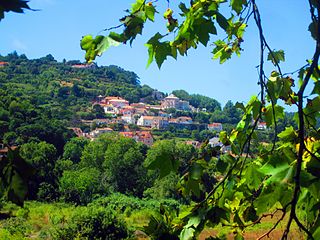
Quinta do Vinagre, in the place of the same name in Colares, between the Sintra road and the old road, next to Eugaria, is an important architectural complex, a magnificent example of a Portuguese rural noble house, located in one of the most picturesque places in the area, where a dam of the Ribeira de Colares forms a small lake.
18. Quinta da Ribafria
The Quinta da Ribafria is situated close to Sintra in Lisbon District, Portugal. It was built from 1536 to 1541 by Gaspar Gonçalves, a ceremonial official of the Portuguese Royal Household, on land donated to him by King Manuel I in 1515. The property is now owned by the Sintra Municipality.
Wikipedia: Quinta da Ribafria, Sintra (EN), Heritage Website Sipa, Heritage Website
19. Anta de Agualva
The Anta de Agualva, also known as the Anta do Carrascal, is a megalithic dolmen situated in an urban area of Agualva-Cacém in the municipality of Sintra, in the Lisbon District of Portugal. First identified by Carlos Ribeiro in 1875, the dolmen has recently been restored and can be easily visited.
Wikipedia: Anta de Agualva (EN), Heritage Website Arqueologia, Heritage Website Sipa, Heritage Website
20. Capela de Nossa Senhora da Penha
The Sanctuary of Peninha is situated in the Sintra Mountains in the Sintra-Cascais Natural Park, in the Lisbon District of Portugal. It stands at an altitude of 448 metres on top of a rocky outcrop, which provides views over the coastline and inland areas. In addition to a baroque chapel, completed in 1710, the location contains the Palace of Peninha, which dates from 1918, as well as remains of a hermitage. The interiors of neither the chapel nor the palace can presently be visited.
Share
Disclaimer Please be aware of your surroundings and do not enter private property. We are not liable for any damages that occur during the tours.
